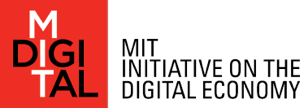
Four Key Challenges Loom Large at July 12 Summit
By Geoffrey Parker, Marshall Van Alstyne, and Peter Evans
When digital platforms emerged a decade ago the challenges seemed straightforward and the possibilities endless. Strategists focused primarily on reducing transaction costs and on solving the basic business problems of getting their platforms up and running. After that, they could drive scale and develop a revenue model that justified their continued valuations. The mantra was: Get big fast! The most successful platforms harnessed scale and networks to dramatic effect.
As platforms became more established and prolific, however, leaders—including Google, Apple, Uber, and Facebook— also had to invest in governance. They pondered how to attract or keep “good” users and ban “bad” users; Alibaba worried about fraud, Facebook about hate speech, Twitter about trolls (an unfinished effort, to say the least).
Today, the landscape is rumbling with activity, but also with complexity and far-reaching concerns. We see the platform market rapidly changing, maturing, and giving rise to at least four big issues: Regulatory constraints, growth pressures, a shift to enterprise markets, and technology disruptions. All of these topics will be addressed by high-level experts at our upcoming 2019 Platform Strategy Summit at MIT on July 12. The full agenda—featuring speakers from academia, industry, and government—can be found here.
What follows is a brief summary of each topic.
- New Regulatory Constraints
Restrictions on data are a hot-button issue, as are antitrust concerns. Where platforms initially focused on unfettered data acquisition, strategy must now consider a growing number of rules and regulations, not all consistent with the next round likely to come. On the distribution side, fake news and undue influence draw scrutiny. As a result, we expect data costs to rise along with compliance costs. Corporate strategies must shift to find low-cost compliant data. More attention will have to go toward gaining customer trust, matching regional policy, and demonstrating data transparency.
As platform scale continues, there’s also mounting pressure for “competition policies” to level the playing field. The dominant platforms are so large and cross so many markets that they have triggered significant antitrust examination–even among U.S. presidential candidates and EU regulators. Platform strategy must now take these anti-trust considerations very seriously.
- Growth Pressures
The era of explosive platform growth is ebbing, and many of the low-hanging opportunities are gone. Platform strategists, therefore, are working to identify new growth prospects. One major trend is the move to adjacent markets, as illustrated by Amazon in entertainment and groceries, Google in autonomous vehicles, Facebook in virtual reality and payments, and Apple in news and streaming music. Tencent and Alibaba are moving into digital banking. Strategists must ask which markets are underdeveloped and what techniques can make them tip?
For instance, the South African-based platform holding company, Naspers, is making a push into the nascent digital-payments systems market with its purchase of PayU, a Turkish company.
For its part, Airbnb is seeking growth by building an end-to-end travel platform. It recently acquired HotelTonight, a booking service focused on last-minute trips to boutique and independent hotels.
- A Shift to Enterprise Markets
Most platforms cut their teeth on consumer-facing platforms. In the process, they built out AI and ML capabilities that now might be of considerable interest to enterprise customers creating new business opportunities.
At the same time, a shift to enterprises requires platforms to identify and morph existing capabilities into services that large businesses can consume. Two recent examples illustrate the effort to buy and build more friendly delivery models: Salesforce bought data visualization and analytics leader Tableau for $15.7 billion, while Google acquired data discovery and analytics platform, Looker, for $2.6 billion.
A second challenge is how to create sufficient guardrails (i.e. trust and transparency) on these service offerings so that they become broadly enterprise-friendly. The appeal of the enterprise market—where the top global 500 companies have revenue of over $30 trillion—is clear. However, there is significant mistrust from enterprise players who fear that platform entrants will disrupt their most profitable businesses. The platform challenge will be to carve out new revenue streams while not alienating valuable customers. It’s a delicate balance because some incumbents will inevitably face significant competition from platforms. If such markets transform, many small players will die, so simply selling them enterprise tools is a short term strategy at best.
- Technology Disruption
New technologies will continue to shape the platform landscape. Some large platform companies see AI as the key to future growth and productivity. For others, 5G has the most potential.
Projections indicate that one billion 5G devices for enhanced mobile broadband will be connected by 2023, with extended deployment in closed ecosystems. While 5G is in its infancy, platform strategy will play a key role in defining its success, too. What will this mean for platform IoT strategy? Will next-generation, 5G mobile wireless technology live up to its claims of greater reliability, smaller footprint, increased speed, greater numbers of permissible connections, and lower latency? Will this technology reinforce existing platforms or will it unleash a new wave of players?
Of course, success is never guaranteed or immediate. Blockchain, for instance, has yet to make a major impact on platforms, but that may change soon with Facebook’s recently announced Libra financial play and IBM’s use of blockchain for logistics. Facebook’s move into crypto currency could provide new legitimacy with interesting spillovers to existing players. IBM, meanwhile, partnered with Maersk to launch TradeLens, a blockchain-based platform for managing global shipments. For more details, we recently wrote about this trend in a Harvard Business Review article.
Eye on Incumbents
We continue to see significant gaps in incumbent organizations’ capacity to interface and negotiate with platform companies, and to replicate their offerings. These gaps fall into three primary areas. One is the ability to anticipate which markets will transform. Most executives struggle to fully grasp the nature of “inverted firms,” those that move production from inside the organization to outside. They also have yet to learn how to make the transformation happen.
Second is the widely noted shortage of data scientists. Platforms are naturally data rich and often grow up with robust data warehousing, analytics, and experimentation infrastructure. Incumbents have much catching up to do to replicate these capabilities and apply them effectively.
A third area where incumbents have gaps is their ability to coordinate external players as effectively as platforms. Traditional firms have long organized supply chains, but those tend to be known, stable relationships instead of the uncharted, more dynamic supply-and-demand relationships that platforms foster.
Nevertheless, traditional firms have valuable experience to draw upon. They’ve long had to navigate complex regulatory environments and tend to have a significant lead over their platform partners and competitors when it comes to dealing with government. Don’t count them out of the race yet; there’s a long way to go—and they still have time to attend the MIT Platform Summit!
Geoffrey Parker, (center, in photo) is a professor of engineering at Dartmouth College and a research fellow at MIT’s Initiative for the Digital Economy (IDE) where he leads platform industry research studies and co-chairs the annual MIT Platform Strategy Summit. Parker has made significant contributions to the field of network economics and strategy as co-developer of the theory of “two-sided” markets. He is coauthor of the international bestseller Platform Revolution. His current research includes studies of platform business design and strategy, data governance, and antitrust.
Marshall Van Alstyne (at right, in photo) is the Questrom Chair Professor of Management at Boston University, with expertise in network and information economics. His work explores how ICT affects firms, products, innovation, and society. His work has appeared in journals such as Science, Nature, Management Science, American Journal of Sociology, Strategic Management Journal, The Economist, The New York Times, and The Wall Street Journal. He is coauthor of the international bestseller Platform Revolution, and co-creator of the concept of two-sided network effects taught worldwide.
Peter C. Evans (at left, in photo) is a Principal in the Innovation & Enterprise Solutions group at KPMG. In addition to identifying, framing, assessing, and communicating high-priority marketplace trends and disruptions to senior firm leadership, he leads strategic research for the firm. His most recent study, KPMGs 2019 Enterprise AI Adoption Study, provides the first comprehensive examination of how the world’s largest enterprises are deploying artificial intelligence.
